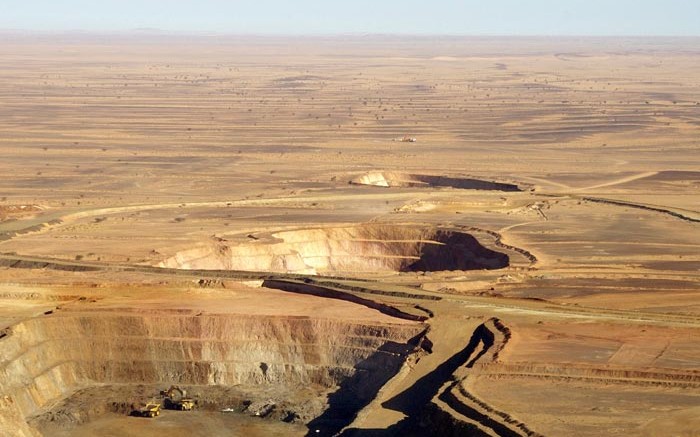VANCOUVER — It has become a game of margins for Kinross Gold (TSX: K; NYSE: KGC). A steep drop in gold prices has sent the company scrambling to identify cost-saving measures, while the ill-fated, US$7.1-billion acquisition of Red Back Mining and its Tasiast asset in 2007 continues to haunt it with mounting impairment charges.
The negative news has overshadowed the fact that Kinross is operationally strong. The company beat consensus analysts’ earnings estimates for the fourth straight quarter over the past three months, and remains on track to hit its annual guidance of between 2.4 million and 2.6 million oz. at production cost of sales per gold-equivalent ounce ranging from US$740 and US$790 per oz.
Kinross cranked out 655,380 equivalent oz. gold during the second quarter at all-in sustaining costs of US$1,072 per oz. That compares to production of 649,000 oz. at cash costs of US$1,038 per oz. in the first quarter of 2013, and 632,772 oz. at cash costs of US$970 per oz. during the same period in 2012.
The devil remains in the margins for Kinross, however, as the company has suffered from rising operating costs and falling gold prices. Attributable margins are down US$187 per equivalent oz. gold sold year-on-year, while adjusted net earnings have fallen US$30 million over the same period to US$120 million, or 10¢ per share. Earnings did, however, beat an analyst consensus of 6¢ per share for the quarter.
“In the current challenging environment, Kinross continues to deliver strong operating results,” commented CEO J. Paul Rollinson. “Balance sheet strength and liquidity remain key priorities. Given the current lower gold price environment, and its impact on cash flow, the board has suspended our upcoming semi-annual dividend, which we will continue to re-evaluate based on market conditions and operational performance. This was a difficult decision, but we believe it is the right decision in today’s challenging and uncertain gold price environment.”
Kinross is reviewing its operations with a focus on cost-cutting and preserving cash flow. The company identified new reductions totalling US$180 million during the second quarter, with 2013 capital expenditures dropping from US$1.6 billion to US$1.5 billion.
Kinross has decreased its exploration budget by 20% to US$130 million, and targeted US$150 million in reductions at its operations and projects, based on deferrals of stripping, infrastructure development and equipment purchases. The company also ditched an 8¢ semi-annual dividend, which should save it around US$180 million per year. Rollinson commented that “further significant reductions are targeted for 2014.”
Adjusted operating cash flows from Kinross’ mines totalled US$257 million, or 22¢ per share during the quarter, but the company ended up reporting a net loss of US$2.5 billion, or $2.17 per share, due to impairment charges stemming from acquisitions that now look questionable, largely as a result of lower short-term and long-term gold price assumptions and socio-political turmoil.
Kinross reported an after-tax impairment of US$2.3 billion during the quarter, with the biggest culprits being the company’s Mauritania-based Tasiast project and the discontinued Fruta del Norte project in Ecuador. Kinross swallowed another US$1.3 billion in non-cash impairment charges at Tasiast during the second quarter — bringing the value of writedowns at the project to US$4.5 billion over the past six months — while a political fall-out at Fruta del Norte resulted in more impairment charges totalling US$720 million.
“In light of these planned [cost] reductions, and continued uncertainty regarding gold prices, we do not expect to make a decision on whether to proceed with a Tasiast mill expansion until 2015 at the earliest, regardless of the results of the feasibility study expected in [first-quarter 2014],” Rollinson added, referring to a 38,000-tonne-per-day expansion Kinross is contemplating at the project.
The good news for Kinross is that it maintains a strong balance sheet. The company reported US$2.7 billion in liquidity at the end of June, which includes US$1.2 billion in cash and equivalents and US$1.5 billion in available credit facilities. Kinross has traded within a 52-week range of $4.74 to $10.98, and saw its shares drop around 22.4%, or $1.52 during the second quarter, en route to a $5.79 close at press time. The company maintains 1.1 billion shares outstanding for a $6-billion market capitalization.


Be the first to comment on "Kinross protects cash as writedowns persist"